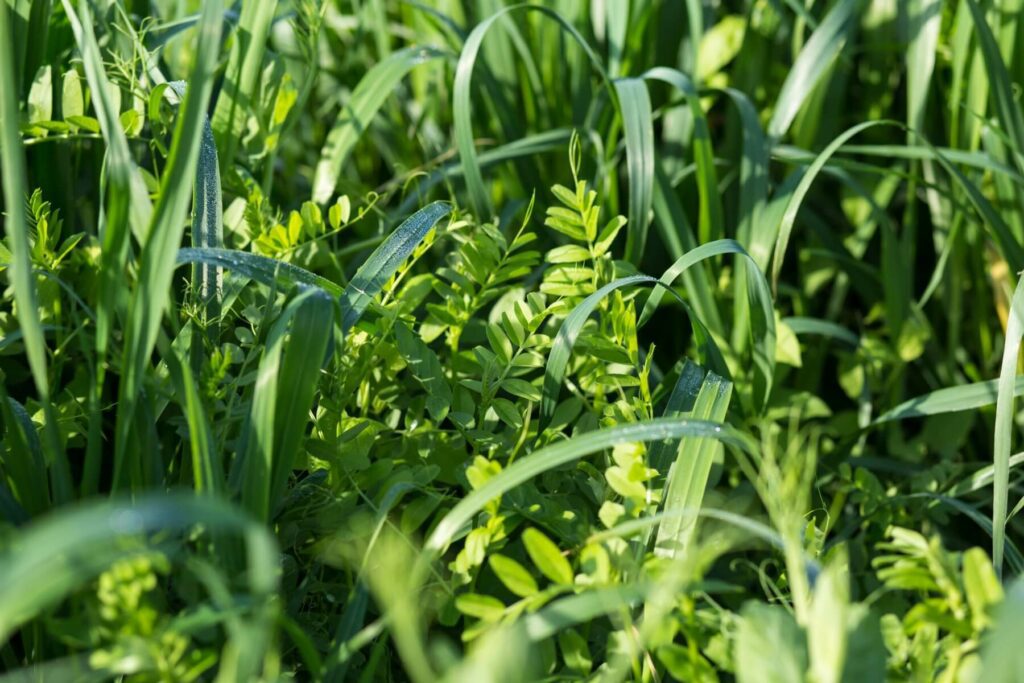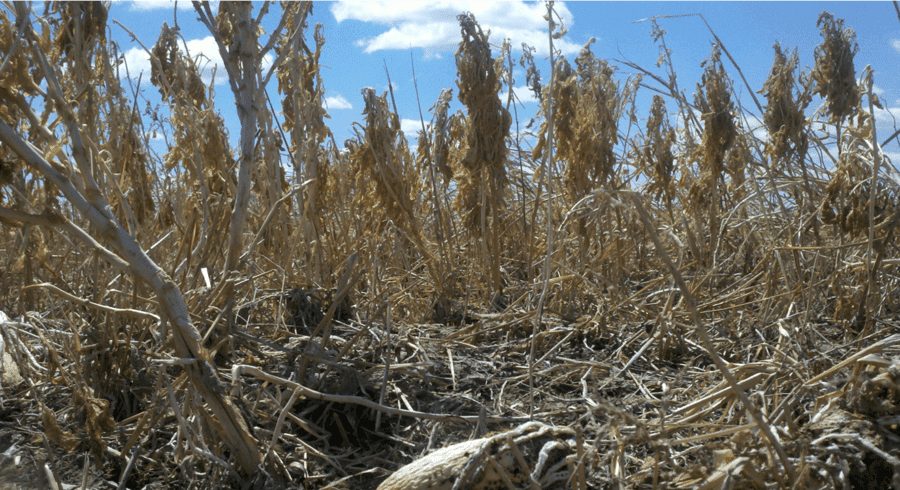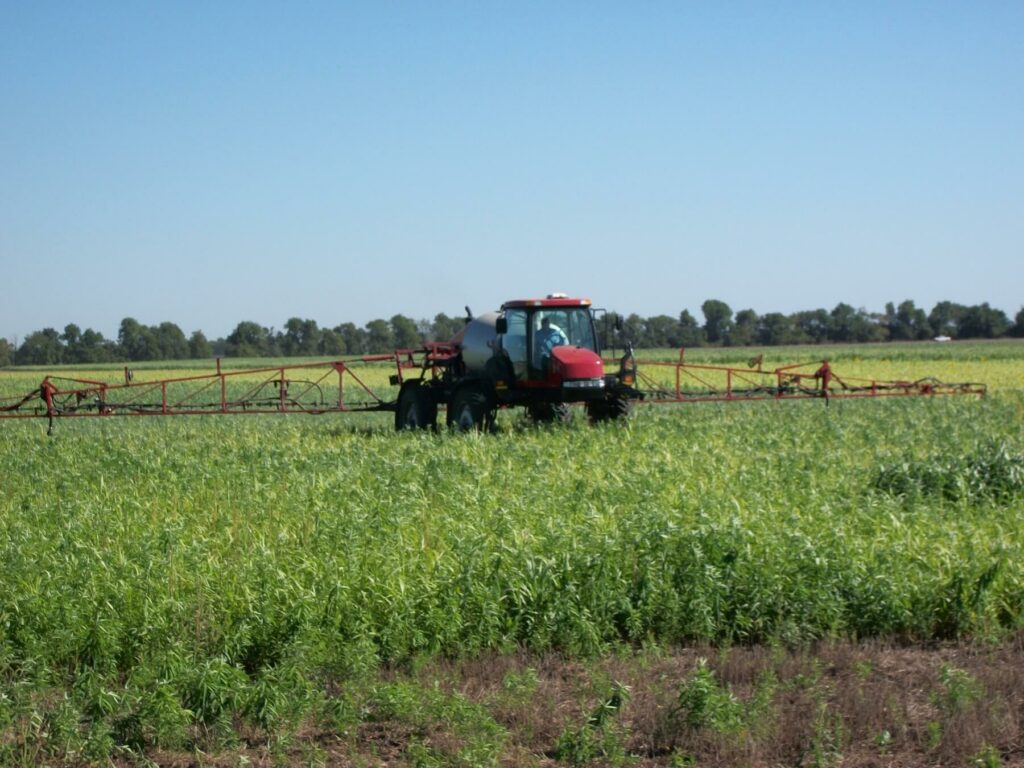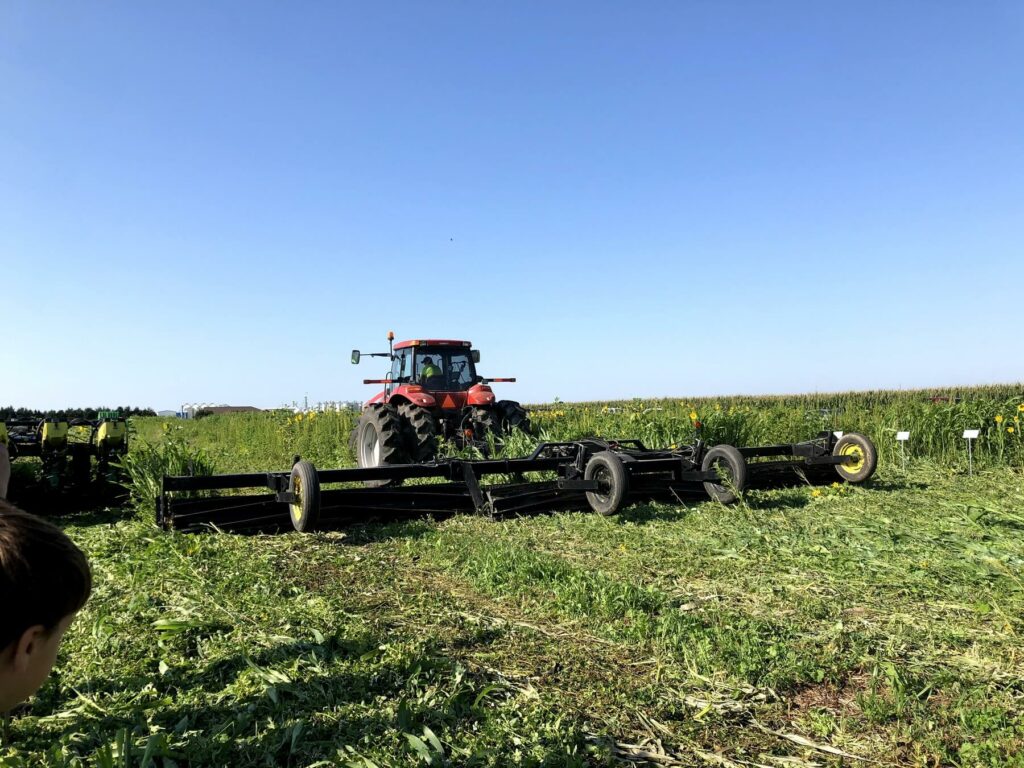All good things must come to an end, even your beautiful cover crop field! And in fact, if they do not come to an end at the right time or in the right way, they may cease being a good thing entirely. Cover crops provide many benefits but if they are not properly managed, controlled, and terminated, they can become unwanted competition for the next crop. When making a termination plan, your agronomic goals as well as the needs of the next cash crop should be given priority. Cover crop species in the mix, growth stage, weather, and time of the year are all factors that impact termination decisions around both timing and method. It is important to consider how the timing and the termination method that you choose fits into the principles of soil health including the context of your operation.
Timing of Termination
Early Termination occurs when the cover crops are terminated two weeks or more before the next planting, or prior to the plants in the cover crop mix having reached the reproductive stage. Early termination should occur in more arid areas or seasons when moisture use ahead of the next planted crop is a concern. This strategy can also be used if the operators’ seeding equipment cannot handle large amounts of biomass that would accrue from longer cover crop growth. The drawbacks to early termination is that the benefits from your growing cover crop, such as pumping liquid carbon into the soil to feed the biology, nitrogen fixation, and support to beneficial insects will end early. The advantages to early termination include faster decomposition and nutrient cycling, easier planting conditions for the next crop, less late season moisture use, and easier chemical termination of the cover crop.
 Late Termination occurs when the cover crop is killed either at or after planting or when species in your mix are well into the reproductive stage. This is often referred to as “planting green” and is an effective strategy that has significant advantages when and where the practice can be effectively managed. These advantages include:
Late Termination occurs when the cover crop is killed either at or after planting or when species in your mix are well into the reproductive stage. This is often referred to as “planting green” and is an effective strategy that has significant advantages when and where the practice can be effectively managed. These advantages include:
- More solar energy will be captured, resulting in more total soil carbon which will feed soil biology and increase water holding capacity of the soil.
- Greater above-ground and below-ground cover crop biomass which helps to increase water infiltration and reduce surface runoff and soil erosion.
- Legume covers will fix more (often double or more) atmospheric nitrogen when growing an extra couple of weeks in the spring.
- More nutrients can be scavenged and cycled that might otherwise be lost by leaching to groundwater or runoff to surface water.
- Excess soil moisture will be used and help the soil to dry out and warm up quicker during wet springs.
- Hairpinning problems during planting should be eliminated or greatly reduced, because green cover crop biomass cuts significantly better than that of dying crop residue that has been sprayed with herbicide but is not yet crisp and dry.
 Termination Methods
Termination Methods
Freeze Kill Termination:
Cold weather is both a blessing and a curse. One of the blessings is that it can be counted on to winter- terminate a cover crop that was late summer or early fall planted. When the timing and the environment allows, this is the best method as it requires no chemical or mechanical inputs. Most warm season species will die with the first frost while other cool season crops like oats, spring peas and radishes will be killed at temperature at or just below 20 degrees. For effective freeze termination, you will need to plan the species you are using and when you are using them. The Green Cover Smartmix Calculator can help you do this as all available species have been rated for winter kill termination.

Oats, radish, millet, cowpeas, and African cabbage were effectively terminated when winter temperatures dropped below 15 degrees F
Tillage Termination:
Traditionally tillage has been used to control weeds and that same ability makes it an option for terminating cover crops. A pass with a tillage implement is often fairly effective at terminating many types of cover crops as the roots will be cut and the plant biomass will get incorporated into the soil. Implements like undercutters and high speed discs may cause less disturbance than chisels, plows, and tandem discs, but producers need to be aware of the negative effects that tillage has on soil as it relates to the principles of soil health.
Chemical Termination:
Herbicide use for chemical termination is the most common method used by non-organic farmers. Often a farmer will be doing a burn-down pass for weeds in a field anyway, so by tweaking the timing and the formulation, this same pass and same expense can also be utilized to terminate a cover crop. There are numerous herbicide options on the market today for all sorts of different situations and for specific plant groups. For questions on herbicide recommendations, consult your agronomist or chemical distributor and be sure to always read and follow the label directions for the herbicides that you are using.
 Roller Crimp Termination:
Roller Crimp Termination:
Roller crimpers have been gaining in popularity as a termination technique over the past 20 years as the equipment and understanding of use are getting better each year. Based on the soil health principles, this is a far more soil-friendly method than either tillage or herbicide termination because it kills plants without disturbing the soil or ground cover. The idea is to crimp, but not cut, the stem and vascular system of a plant to disrupt the flow of water, nutrients, and photosynthates which will then effectively kill the plant. While the concept is simple, the practice can be complicated and the effectiveness and success of roller crimping termination will depend on several factors.
Timing is the most important factor as plants have a window of susceptibility where they can be successfully crimped. For most species, this is at anthesis, or where the plant is flowering and shedding pollen. Crimping before or after this stage is not as effective or successful. Oftentimes producers are not willing to wait for the cover crops to reach this stage so crimping is either rejected as an option or is used, but not successfully. Non-organic producers do have the option to crimp at an earlier growth stage and lay the cover on the ground and then follow up with a lighter rate of herbicide to “finish off” the already injured cover crop before it can recover. Because the crop maturity stage is so important to the success of roller crimping, highly diverse mixes are generally not used when crimping is the planned termination method as these mixes will typically have plants at all stages of maturity. Simple mixes like cereal rye–hairy vetch or oats-peas can be successfully terminated with roller crimping as the crop stage maturity of both species in the mix generally match up.
Multiple companies are now manufacturing high quality roller crimpers that are available for sale. An alternative is to build your own and thanks to the generosity of the Rodale Institute, you can download the full blueprints for their very successful crimper design. Simply do an internet search for “Rodale roller crimper plans”.
 Grazing or Mowing Termination:
Grazing or Mowing Termination:
This method is not as reliable for complete termination but can be utilized in certain situations. Plants normally regrow if grazed or mowed while still in a vegetative growth state, but once a plant goes reproductive, they won’t regrow as well. The problem with grazing is that it is much more difficult to get livestock to readily consume plants in the reproductive stage, so high density stocking rates with faster moves are the key to making this method effective. Mowing can be effective at later maturity stages, however the big drawback to mowing is that the plant residue is chopped up into small pieces and will decompose very quickly and likely be blown by the wind into piles. This will make for a very non-uniform residue cover on the soil surface which will make both planting and plant growth more difficult for the next crop. Roller crimping on the other hand leaves the plants anchored and attached to the soil and the residue in long, un-cut pieces which leads to maximum uniformity across the field.
The termination method that you choose to use needs to be based on the context of your operation and the goals that you have for both the cover crop and the next cash crop. Remember cover crops are a good thing, but they need to end well to continue to be a blessing for your operation!
THIS ARTICLE CAN BE FOUND ON PAGES 62-63 OF THE SOIL HEALTH RESOURCE GUIDE.

 Roller Crimp Termination:
Roller Crimp Termination: